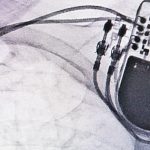The healthcare industry is rapidly evolving, with technological advancements playing a crucial role in enhancing patient care and outcomes. Among these innovations, cardiac devices—such as pacemakers, defibrillators, and heart monitors—stand out as life-saving technologies. However, the success of these devices isn’t solely dependent on their functionality or the breakthroughs they represent… It also hinges on effective marketing strategies that ensure these products reach the right patients and healthcare providers.
1. Raising Awareness
Cardiac device marketing plays a pivotal role in raising awareness among both healthcare professionals and patients. Despite the effectiveness of these devices, many potential beneficiaries remain unaware of their options. Effective marketing campaigns can bridge this knowledge gap by educating the public on the availability, benefits, and potential life-saving capabilities of these devices. This is particularly important for those who may not have access to cutting-edge information through traditional healthcare channels.
2. Building Trust and Credibility
The healthcare sector is built on trust, and this is especially true for cardiac devices that are often used in critical situations. Marketing efforts must focus on building credibility by highlighting clinical trials, endorsements from leading cardiologists, and real-life success stories. By showcasing the reliability and effectiveness of these devices through various channels, companies can foster trust with both healthcare providers and patients, encouraging them to choose their products over competitors.
3. Navigating Regulatory Hurdles
The marketing of cardiac devices is highly regulated, requiring compliance with stringent guidelines to ensure patient safety and product efficacy. A robust marketing strategy not only promotes the device but also ensures that all communications adhere to these regulations. This involves working closely with regulatory bodies, crafting messaging that is both compelling and compliant, and keeping up-to-date with changes in legislation.
4. Differentiation in a Competitive Market
The market for cardiac devices is highly competitive, with numerous companies vying for the attention of healthcare providers and patients. Effective marketing strategies help differentiate a company’s products by highlighting unique features, technological advancements, and patient benefits that set them apart from the competition. This differentiation is crucial in influencing the decision-making process, ultimately leading to increased market share and revenue growth.
5. Empowering Healthcare Providers
Healthcare providers are key decision-makers in the adoption of cardiac devices. Marketing efforts should focus on empowering these professionals with the information they need to make informed decisions. This can be achieved through targeted educational programs, detailed product literature, and ongoing support. An informed and confident healthcare provider is more likely to advocate for a particular brand, leading to better patient outcomes and increased sales.
6. Emphasizing Patient-Centric Approaches
Modern marketing strategies are increasingly patient-centric, focusing on the end-users of the devices—the patients themselves. Understanding the patient journey, addressing their concerns, and providing clear, accessible information about how these devices can improve their quality of life are essential components of a successful marketing campaign. By connecting with patients on a personal level, companies can build brand loyalty and encourage patients to take an active role in their own healthcare.
7. Leveraging Digital Marketing
In today’s digital age, online marketing is indispensable. Cardiac device companies must leverage digital platforms to reach a broader audience, engage with potential customers, and provide real-time information. Moreover, digital marketing allows for more precise targeting, ensuring that marketing efforts reach those most likely to benefit from the devices.
8. Supporting Sales and Distribution Channels
Marketing is not just about creating awareness but also about supporting the sales and distribution channels that ensure these devices reach the patients who need them. This includes providing training and resources for sales teams, creating marketing materials that can be used in conversations with healthcare providers, and ensuring that the distribution network is well-informed and aligned with the brand’s messaging.
Cardiac device marketing is a critical component of the healthcare ecosystem, playing a vital role in ensuring that life-saving technologies reach those who need them most. By raising awareness, building trust, differentiating products, and supporting both patients and healthcare providers, effective marketing strategies contribute to the overall success of cardiac devices in the marketplace. As the industry continues to evolve, the importance of strategic, compliant, and patient-centric marketing will only grow, driving innovation and improving outcomes for patients worldwide.






